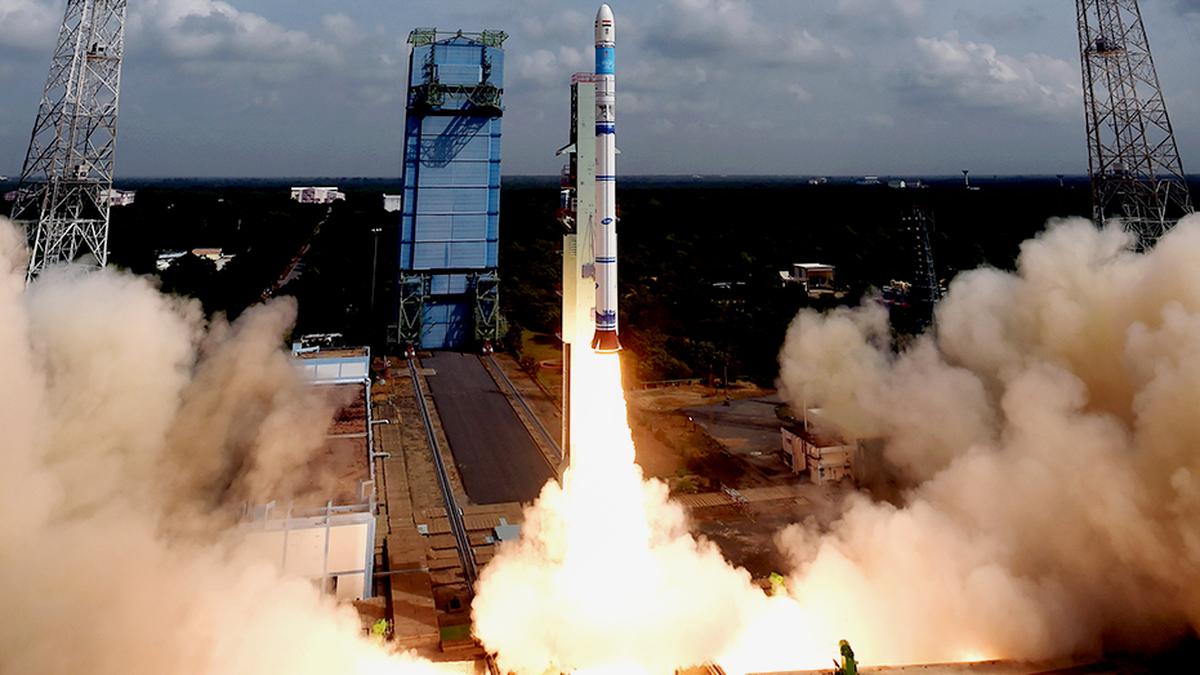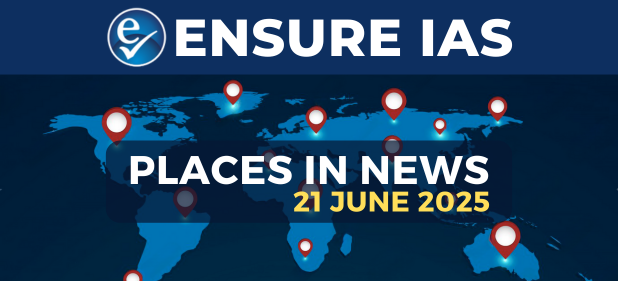- Courses
- GS Full Course 1 Year
- GS Full Course 2 Year
- GS Full Course 3 Year
- GS Full Course Till Selection
- Answer Alpha: Mains 2025 Mentorship
- MEP (Mains Enrichment Programme) Data, Facts
- Essay Target – 150+ Marks
- Online Program
- GS Recorded Course
- Polity
- Geography
- Economy
- Ancient, Medieval and Art & Culture AMAC
- Modern India, Post Independence & World History
- Environment
- Governance
- Science & Technology
- International Relations and Internal Security
- Disaster Management
- Ethics
- NCERT Current Affairs
- Indian Society and Social Issue
- NCERT- Science and Technology
- NCERT - Geography
- NCERT - Ancient History
- NCERT- World History
- NCERT Modern History
- CSAT
- 5 LAYERED ARJUNA Mentorship
- Public Administration Optional
- ABOUT US
- OUR TOPPERS
- TEST SERIES
- FREE STUDY MATERIAL
- VIDEOS
- CONTACT US
Prime Minister Modi's Visit to Sri Lanka
Prime Minister Modi's Visit to Sri Lanka
- Prime Minister Narendra Modi arrived in Colombo, Sri Lanka on the night of April 4, 2025, for a 2 -day visit.
- This visit came shortly after PM Modi’s participation in the BIMSTEC Summit in Thailand, marking it as part of a broader regional diplomatic engagement.
- Theme of the Visit: “Friendship of Centuries – Commitment to a Prosperous Future”
- The visit focused on strengthening the bilateral relationship between India and Sri Lanka, addressing key strategic, economic, and cultural issues, and signing several significant agreements.
Historical Context:
- Modi’s visit came after Sri Lanka experienced a major political shift in 2024, with the rise of President Anura Kumara Dissanayake from the National People’s Power (NPP) alliance.
- PM Modi is the first foreign leader to visit Sri Lanka since President Anura Kumara Dissanayake took office in September 2024.
- December 2024 saw Dissanayake’s first official visit to India, where both nations laid out a roadmap for future cooperation in a joint statement.
Key Updates :
1. PM Modi’s Arrival and Welcoming Ceremony :
-
- Prime Minister Modi was warmly welcomed at Bandaranaike International Airport by five top Sri Lankan ministers, including Foreign Minister Vijitha Herath, Health Minister Nalinda Jayatissa, and Fisheries Minister Ramalingam Chandrasekar.
- PM Modi was also given a guard of honor at Independence Square in Colombo.
- It is marking his 4th visit to Sri Lanka in the last decade.
- Additionally, The ceremonial welcome was a reflection of the strong and deep-rooted ties between India and Sri Lanka, with both nations celebrating shared cultural, historical, and spiritual heritage.
2. Bilateral Talks with President Dissanayake : Addressing Key Issues:
- PM Modi held extensive delegation-level talks with President Anura Kumara Dissanayake. Their discussions included several key areas:
- A significant defence cooperation agreement was signed.
- It is marking a moment in the relationship, particularly given the 35-year history since India withdrew its Indian Peace Keeping Force (IPKF) from Sri Lanka.
- This agreement is expected to enhance both countries' security and defence collaboration.
- Economic Support: PM Modi reaffirmed India’s commitment to Sri Lanka’s economic recovery, especially in light of the 2019 economic crisis and Sri Lanka’s financial distress in 2022.
- India had previously extended $4.5 billion in financial aid during the crisis.
- One of the major highlights of the visit was the signing of debt restructuring agreements.
- Over the past 6 months, India has converted over $100 million in loans into grants, helping Sri Lanka recover.
- India has also agreed to reduce interest rates to provide financial relief.
- Currency Swap Agreement: A separate currency swap agreement was finalized to stabilize Sri Lanka's foreign reserves.
- It is a crucial aspect of their ongoing economic recovery.
3. Virtual Inauguration:
- Several significant projects were launched:
- 5000 solar rooftop units installed at religious places across Sri Lanka.
- A temperature-controlled warehousing facility at Dambulla.
- The 120 MW Sampur Solar Power Project was also inaugurated by PM Modi and President Dissanayake.
- Both nations signed an agreement to develop Thirukoneswaram temple (Trincomalee). It is located in the east of Sri Lanka, as an energy hub.
- Sacred City (Anuradhapura), and the Sita Eliya temple complex (Nuwara Eliya) will receive Indian support for development.
- PM Modi also announced a comprehensive training program, supporting 700 Sri Lankan citizens annually in various skill development initiatives.
- This project is expected to boost Sri Lanka’s energy sector and create long-term economic opportunities.
- India also pledged multi-sectoral grant assistance for the eastern region of Sri Lanka, including support for infrastructure development and humanitarian aid.
- Cultural Cooperation:
- In alignment with the shared Buddhist heritage, PM Modi announced the Holy Relics of Lord Buddha from Gujarat would be sent to Sri Lanka for the International Vesak Day celebrations in May 2025.
- Digital Cooperation:
- Another MoU was signed to strengthen collaboration in the digital domain.
- This pact will focus on enhancing Sri Lanka’s digital infrastructure and increasing cybersecurity cooperation between the two countries.
4. Addressing the Fishermen Issue
- The longstanding issue of Indian fishermen being detained by Sri Lankan authorities was discussed.
- Foreign Secretary of India explained that the issue originated in 1974 when the international maritime boundary line was drawn.
- And escalated with the Fisheries and Aquatic Resources Act of 1996 and subsequent amendments in 2018 and 2023, which imposed stricter penalties on fishermen violating Sri Lanka’s territorial waters.
- PM Modi and President Dissanayake agreed on the need for a humanitarian approach to resolve the matter with further discussions expected to take place between the 2 governments to ensure the release of detained fishermen.
5. Additional Diplomatic Developments
- President Dissanayake requested PM Modi's intervention to facilitate technical discussions regarding Sri Lanka’s claim to extend the continental shelf beyond its exclusive economic zone.
- Sri Lanka is seeking to assert its maritime boundaries in the United Nations.
- PM Modi also paid a visit to the Indian Peace Keeping Force (IPKF) memorial, honoring the Indian soldiers who sacrificed their lives during the peacekeeping operations in Sri Lanka in the 1980s.
- PM Modi emphasized Sri Lanka's importance in India's Neighbourhood First Policy and Vision MAHASAGAR.
Key Facts: PM Modi Awarded Sri Lanka's Mitra Vibhushana
|
Historical Ties Between India and Sri Lanka
- Cultural and Religious Connection:
- Buddhism was introduced to Sri Lanka in the 3rd century BCE by Emperor Ashoka’s son Mahinda, creating a long-standing cultural and religious bond.
- Chola Dynasty (10th century CE) invasions from South India left a lasting cultural impact on Sri Lanka, influencing art, architecture, and language.
- Independence and Political Cooperation:
- Both nations gained independence from British rule, with India in 1947 and Sri Lanka in 1948. India assisted Sri Lanka in establishing democratic institutions post-independence.
- Sri Lankan Civil Conflict:
- The Liberation Tigers of Tamil Eelam (LTTE) formed in 1976, sparking an armed conflict with Sri Lankan forces from 1983 to 2009.
- The 1987 Indo-Sri Lanka Agreement led to the introduction of the 13th Amendment and the deployment of the Indian Peace Keeping Force (IPKF) in Sri Lanka to aid in peace efforts.
- The assassination of Rajiv Gandhi in 1991 by LTTE members shifted India’s approach to the conflict.
- End of Civil War (2009):
- Sri Lanka's Civil War ended through a military operation, but the aftermath has continued to shape bilateral relations, especially regarding the Tamil population.
|
What is the 13th Amendment to the Constitution of Sri Lanka ? The 13th Amendment to the Constitution of Sri Lanka was enacted in 1987 as part of the Indo-Sri Lanka Accord. It aimed to address the demands for greater autonomy from the Tamil minority, particularly in the Northern and Eastern provinces, which had been a focal point of civil conflict. Key Features:
Context: The amendment was intended to promote peace and reconciliation following a prolonged civil war between the Sri Lankan government and the Liberation Tigers of Tamil Eelam (LTTE). However, the full implementation of the amendment has faced challenges, particularly in the Tamil-majority regions. |
India's Engagement with Sri Lanka Across Various Fields
- Economic Cooperation:
- India-Sri Lanka Free Trade Agreement (ISFTA) (2000) boosted trade relations.
- India is Sri Lanka’s largest trading partner, and Sri Lanka is one of India's key trading partners in the SAARC region.
- Cultural Relations:
- Shared Buddhist heritage connects both countries, jointly celebrating Buddha's enlightenment anniversary.
- The Cultural Cooperation Agreement (1977) promotes cultural exchange programs, and the Indian Cultural Centre in Colombo organizes various cultural events.
- Defence and Security Cooperation:
- Since 2012, India has participated in the Indo-Sri Lankan Defence Dialogue, and both nations conduct joint military (Mitra Shakti) and naval (SLINEX) exercises.
- Multilateral Cooperation:
- Both nations are active members of SAARC, BIMSTEC, and the Indian Ocean Rim Association (IORA), and collaborate in global organizations like the United Nations and the World Bank.
China's Expanding Footprint in Sri Lanka - A Strategic Concern for India
- Chinese Investments in Sri Lanka:
- Sri Lanka has received $3.7 billion in investments from China, primarily for infrastructure development.
- Key investments include:
- New oil refinery in Hambantota.
- Expansion of Belt and Road Initiative (BRI) projects in Sri Lanka.
- Hambantota Port - Security Flashpoint:
- Hambantota Port is a key strategic asset that has become a security concern for India.
- The port was leased to China for 99 years after Sri Lanka defaulted on loan repayments to China.
- The lease raised concerns about China's growing influence in the Indian Ocean region and its potential military use.
- Hambantota Port is a key strategic asset that has become a security concern for India.
- Chinese Vessels in Sri Lanka:
- Chinese surveillance vessels, such as Yuan Wang 5, have docked at the Hambantota port, further escalating security concerns for India.
- These vessels are believed to be involved in maritime surveillance, raising alarms about China’s strategic and military interests in the region.
- Sri Lanka's Position:
- Despite India’s concerns, Sri Lanka continues to allow Chinese vessels to dock at its ports under the pretext of "replenishment".
- This continued access to strategic ports has complicated Sri Lanka’s relationship with India, especially in terms of maritime security.
|
Also Read |
|
| FREE NIOS Books | |




